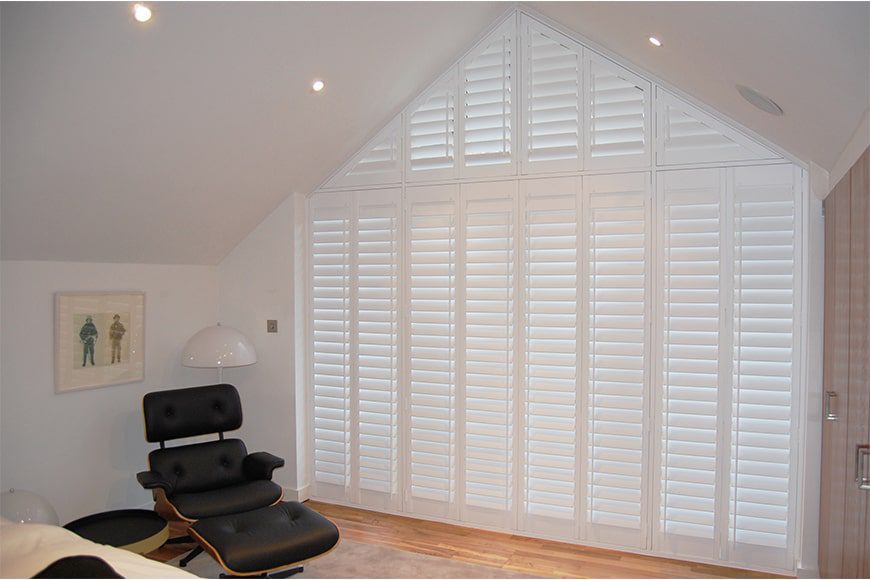One of the best things about floor to ceiling windows is enjoying your expansive view without the interference of frames, muntins, and often dressings. As such, making the absolute most out of your window sometimes demands leaving it be and maximising the beautiful view it provides. For many people this means leaving the window completely undressed, which is perfectly fine. However, there are many types of window shutters with the ability to perfectly accommodate your amazing vistas while simultaneously granting a whole host of practical benefits. Ideally, the shutters will complement your floor to ceiling windows not just in their beautiful presence, but also in their absence.
Most shutters aren’t permanently fixed to the frame of your window, nor are they only capable of allowing light through the louvers. To enjoy your windows without any obstruction to the view, you could opt for hinged shutters that can open up completely to expose the full view they offer. For instance, tracked shutters are often preserved for long or wide openings which cannot be adequately served by regular dressings (i.e. french doors). They have bi fold hinges which allow them to glide along a tracking system and can therefore give plenty of space to your windows. Likewise, full height shutters can be opened on their hinges to ensure the maximum amount of light and an unobstructed view. When the sun becomes too bright or the house gets too cold, you can easily close your shutters and benefit from full light control, insulation, and privacy. Even the most impressive of windows need that practical edge!
Shutters are versatile dressings, so you don’t always have to open them up completely to get make the most out of your floor to ceiling windows. Certain types of window shutter are built in such a way that you can enjoy the view and sunlight afforded by your full height windows without sacrificing warmth, privacy, and control. If you don’t want your shutters to steal the show, consider installing some tier on tier shutters for a balance between the practicality of shutters and the aesthetics of floor to ceiling windows. Incorporating two sets of shutters into one frame, these shutters allow you to open up one half of your shutters (therefore opening up your view) while keeping the other half shut for your preferred level of privacy and insulation. Furthermore, if you would prefer not to fully open your shutters, simply tilting the louvers can give you an adequate view of the outside world while still serving their practical purpose. With this in mind, why not enjoy the best of both worlds?
Floor to ceiling windows may look impressive, failing to give them a dressing which suits your practical requirements can lead to problems with lighting, insulation, sound, and privacy. Luckily, one of the main benefits of window shutters is the amount of control over light they give you. When the sunlight is coming through your floor to ceiling windows and directly into your room, the amount of natural light in your space can be overpowering without some kind of covering. Shutters allow you to tame the light flooding into your space without entirely sacrificing the view. You can angle the louvers so as to block out light while maintaining the vista on the other side – a benefit which you do not get from drapery and certain types of blinds. To control the lighting, simply twist the tilt rod until the louvers reach your desired angle and your room achieves the perfect level sunlight. It’s as easy as that! The resulting effect is a soft but sufficient stream of natural light which gives your space a warm glow without making you squint your eyes.
If you’re wondering how to dress floor to ceiling windows with shutters in the best way possible, the most important point is not to forget the reason why you are dressing them in the first place. Although they may have aesthetic benefits of their own, shutters are ultimately designed to serve a practical purpose too: more privacy, better insulation, and improved control over lighting. As such, you should try to only install shutters where you need them instead of wasting them on windows which would have been better off undressed due to the views and lighting they provide. If your window does not require extra privacy or light control, why not just let it speak for itself? After all, you don’t want to add shutters to some floor to ceiling windows just for the sake of it, only to realise that they don’t actually serve a purpose and you wish that they were never there. If you do end up dressing floor to ceiling windows using shutters, make it count.



